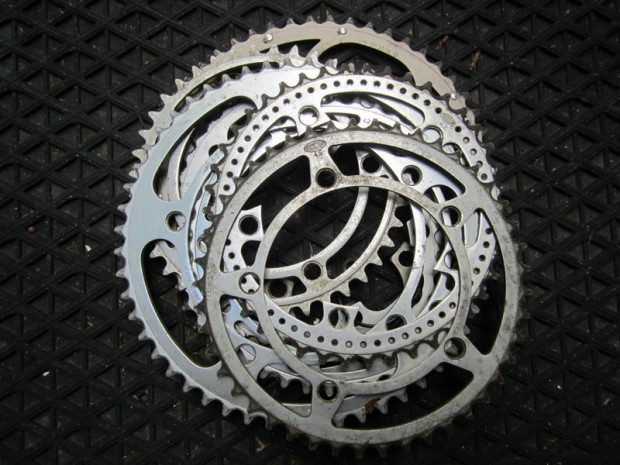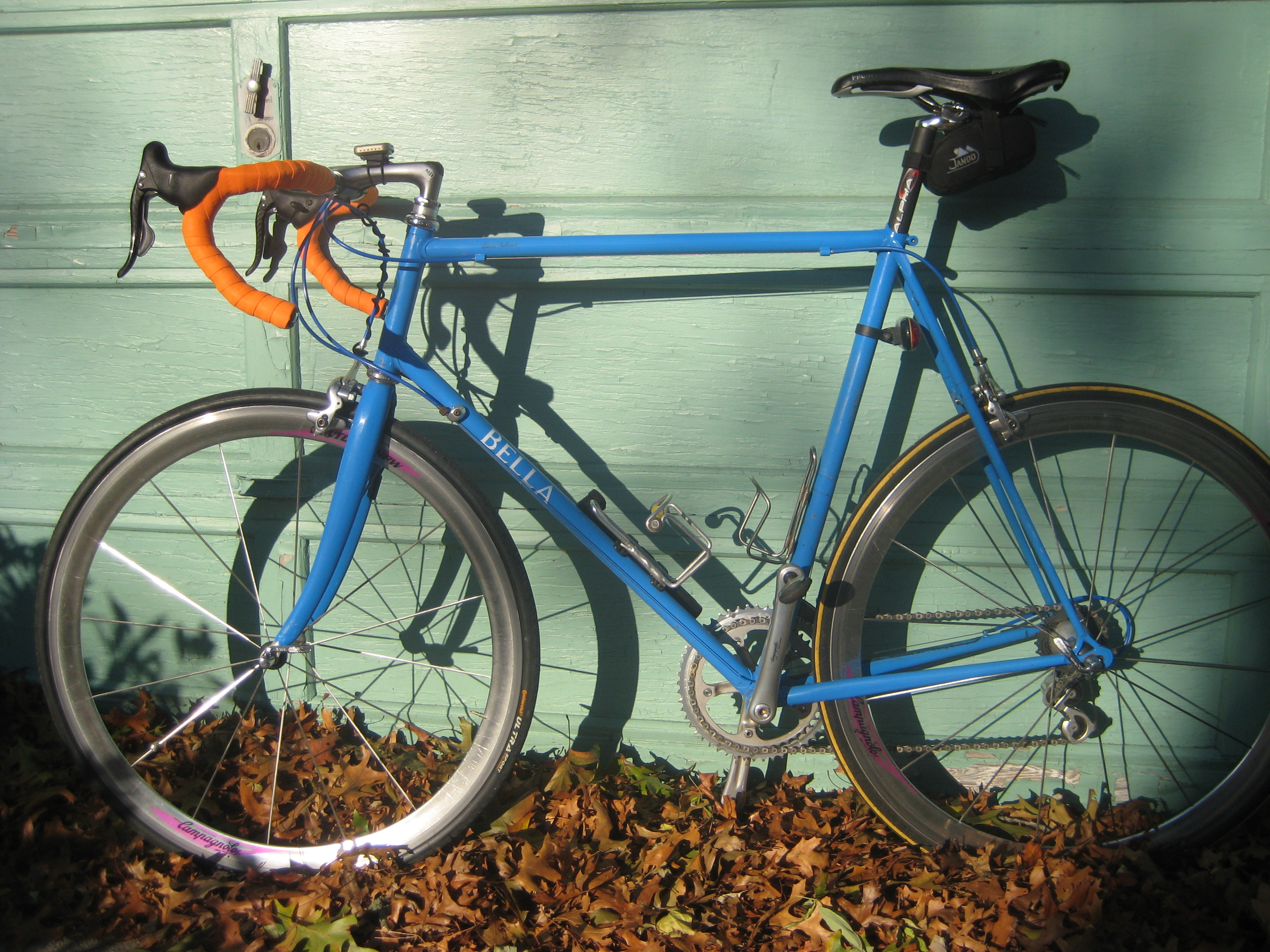Front Chainrings and The Theory of Relativity

Disregarding my Schwinn Typhoon, I started keeping score with my 1976 Peugeot PX 10 LE. It came with a Stronglight 52 x 45 and a 14 x 21 five speed freewheel. I always thought this Peugeot was set up for the pavé of northern France with those gears and wire-wrapped and soldered 3x tubular wheels. Yet according to Peugeot’s advertising, this is what the boys rode in the Tour de France. Chapeau! Since this was my first real bike, the coolness of this Rule #5 rig was lost on me. The uncoolness of Mafac brakes and Simplex derailleurs was not lost on me and over time I swapped out many of the French components for Campagnolo ones but the Stronglight crankset was worthy and it stayed the longest. I found a drilled-out 42 inner ring. Surely Bernard Thévenet would approve of that. It was not such a taskmaster as the 45 and scored very high on the cool scale.
Eventually the 52s went to 53s and the 42s to 39s and there they stayed.
Post-Peugeot I lived on the sandy moraine called Cape Cod. It is rolling, easy-to-ride country; there were no steep, long climbs and the default 39 inner ring was too small for the Cape. Some switched back to 42s but our LBS had a handful of Campagnolo 44 tooth inner rings and a few of us installed them. It didn’t occur to me at the time but I was reverting to a more modern version of my original Peugeot gears. This was not a chainring for the early season but once summer arrived, it made perfect sense. The shifts between the front two chainrings were subtle and smooth. It was all good until we ventured over to a proper climb on the nearby island of Martha’s Vineyard. That climb, known to us as the hill-o-death, started off steep and never eased (this was pre-Garmin world, an estimated 15% grade). It actually was the kind of climb where if you were going to have a heart attack, it would be here. The 44 worked, it just meant most of it was done out of the saddle and the pain cave entrance was lower down. But, it may have been a faster way to get the job done. There was no in-the-saddle spinning going on; it was just more heaving of bike and body trying to turn over the shortest gear the 44 would give up.
I came to Maui armed with the 53 x 39. Earlier on Kauai, I once felt shame and horror as an older dude with stick legs passed me on the Waimea Canyon climb. Those sorry sticks were whizzing over a vile compact crankset. It gave me pause. But on Maui the 53 x 39 got the job done, until I did Maui’s version of the hill-o-death, The Wall. I got up it, but it wasn’t pretty or easy. Something was going to break doing that: knees, heart, chain, pedal, more likely part of me, rather than the bike. I was on Maui for the long haul and the Wall was not going anywhere so I opted for a compact crank.
My above prologue leads me to this, my theory of relativity. The terrain dictates the chainrings. You want a 52 x45 on your bike, stay away from the Pyrenees. If you have a compact crankset on there, there had better be some big ass climbs out your front door. But here at Velominati we like to quantify our suffering. My math is as weak as my VAM but I’m working on a calculation with correction factors which would determine what kind of crank one should have on their bike.
((GL2 x %Gr) 1/age) Bf x BPf x Df
Where:
GL = length of toughest grade encountered on Sunday ride.
Gr = Steepest sustained section of GL.
Bf = Belgian Factor, also known as Museeuw. The need to always ride in the large ring, always.
BPf = Big Pussy Factor, inverse of Bf. The inclination when a climb begins to sit when one might stand, to shift down rather than up.
Df = The Dutch factor, this is a terrain correction for sea level riding, as the Dutch do along the North Sea.

